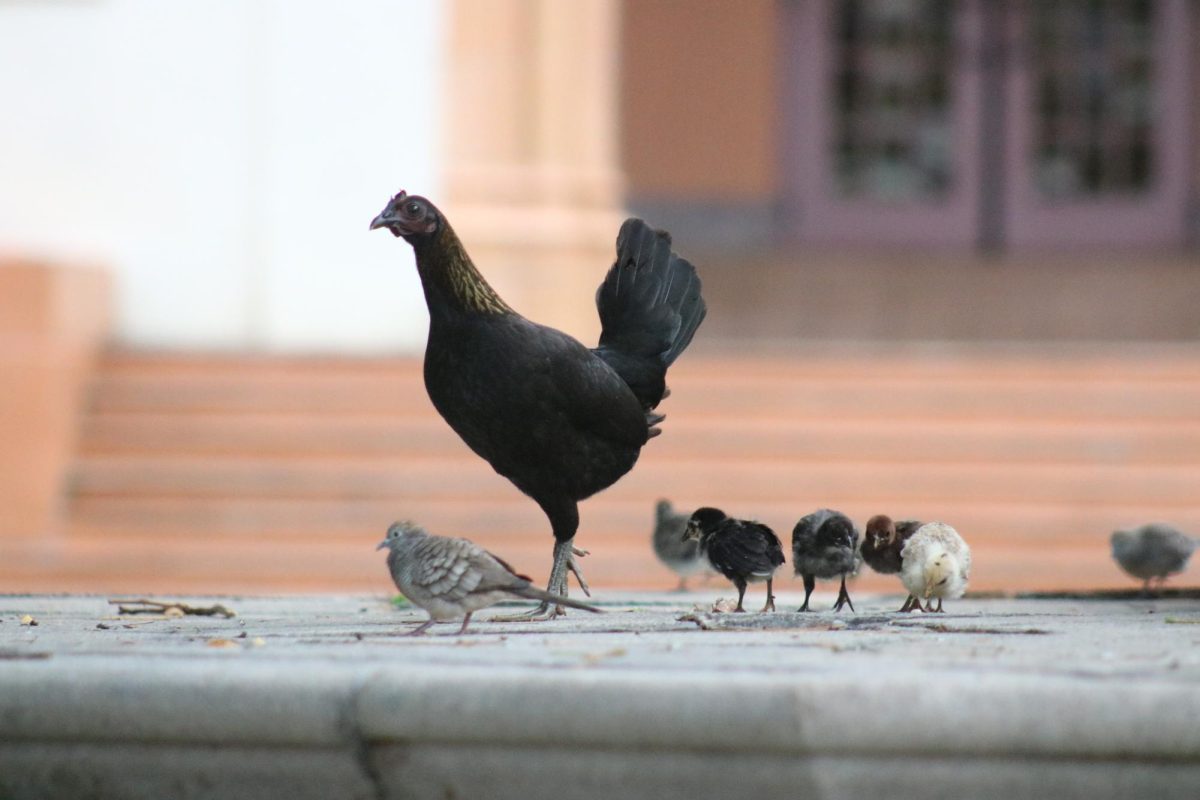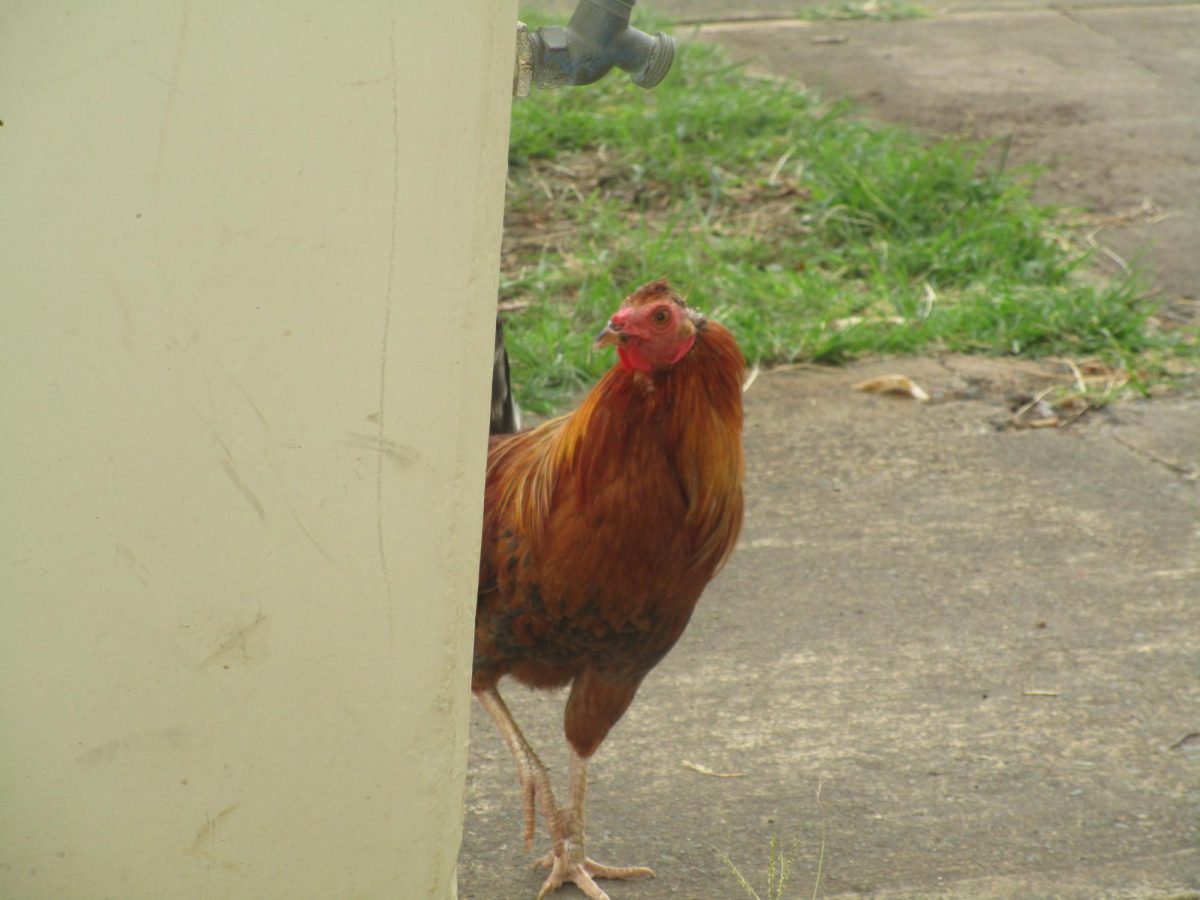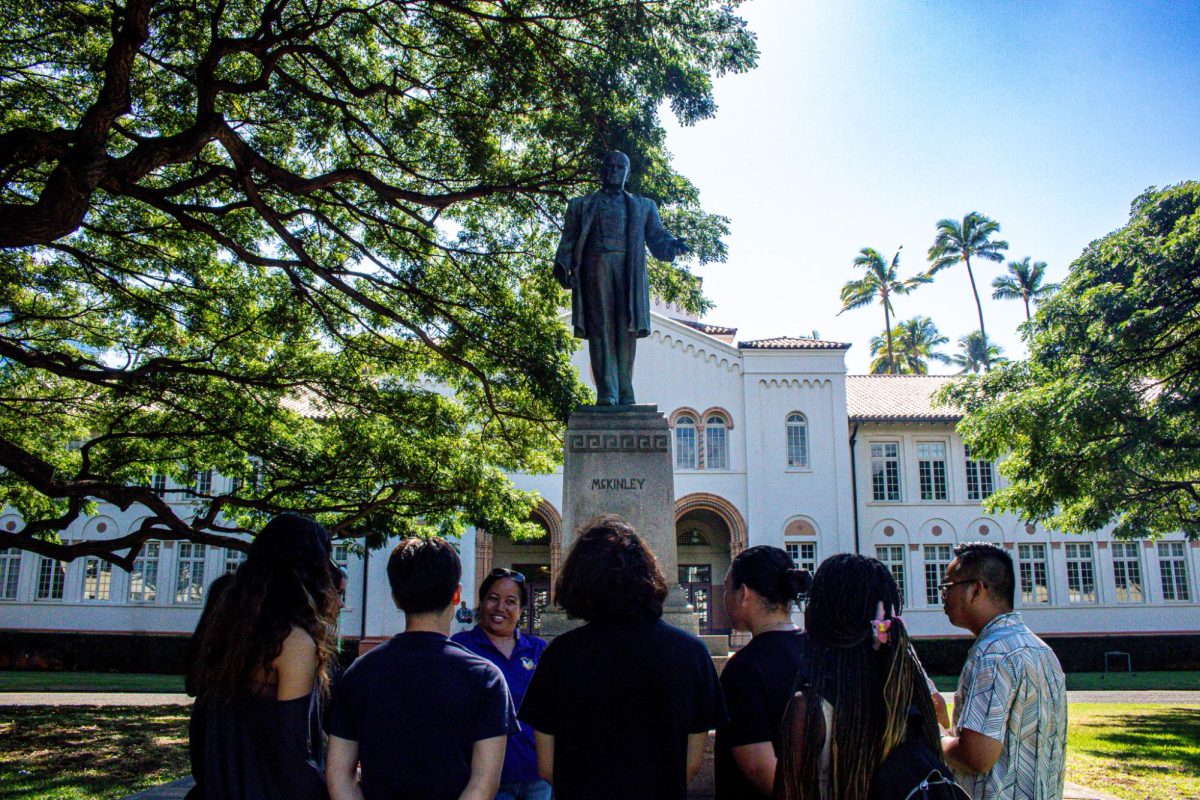Principal Ron Okamura has been working at McKinley High School since 2008 and has seen the chicken population from the beginning.
Okamura said originally there were two hens at this school in the heart of urban Honolulu.
Okamura said that someone must have had the “brilliant idea” that the two hens needed a boyfriend, so a rooster appeared on campus mysteriously.
After the rooster arrived, the population increased steadily. More chickens appeared on campus. With more chickens came more variety of breeds. There were white roosters with red crowns, blond chickens with yellow legs, to black hens with golden patterns.
“Now they’re inbreeding, and they’re getting kinda ugly,” Okamura said.
Okamura said he was raised on a farm and chicken noises are like white noise and do not bother him.
“My honest opinion, I love chickens,” Okamura said.

Juden Bonilla (c/o 2026), who has had chickens come up close to his face, said he has positive feelings toward the chickens. He has seen the chicken population grow and their aggression lessen over time. Some days, a chicken would wander into the middle of his friend group during lunch to swipe a piece of lunch from them.
“Honestly I quite like them; they’re kinda fun to just look at sometimes,” Bonilla said.
Bonilla said when he and his friends were talking, a chicken ran on top of him.
“They were running in like the middle of the group and one of them tried to shoo them away so they just ran on top of me,” Bonilla said.
Esther Shibata, McKinley’s head custodian for over thirty years, said she tries to look at the positives. One positive is there are less bugs because the chickens eat the bugs. When she drove her cart during security checks at night before the chickens came to MHS, she would hear cockroach noises throughout the campus, but now with the chickens here, she no longer hears the cockroaches. Shibata says she doesn’t like pesticides. Since the chickens are natural predators to bugs, they’ve been keeping the bug population low.
“I’ve seen them fight over trying to eat a centipede. One would pick it up and run and yell, and one would chase him down and grab it off his beak. it’s unbelievable,” Shibata said. “That’s the plus side, that they keep down the roaches and the centipedes, and the scorpions.”
With the bug population going down, came a rise in chickens. A trade between pests comes with its problems.
“When the chickens first came, I seen one, seen two, next you know we have more than a hundred,” Shibata said. “All you need is one, two, that’s it, they’re worse than rabbits. One day I see a hen, the next day I see like twelve little ones right behind her.”
Shibata said she used to collect the eggs and give them out. She said these feral chickens are smart and can fly. She said the chickens would wait until the bushes grow long and fly up into the trees to lay their eggs.

“I wish they weren’t here because it’s more added work for us. They make holes in the ground, gotta keep patching it,” Shibata said. “Whatever they’re making dirty we gotta clean, so not happy with them here.”
MHS isn’t the only community discussing chickens. A Civil Beat article said neighborhood boards in Manoa, Hawaii Kai, Kahala, McCully/Moiliili, and Downtown/Chinatown are also complaining about the chickens.
Okamura said he has hired people in the past to catch chickens for $700, caught or not. Even then they only caught two chickens. Shibata asked different farms if they wanted the chickens. One farm did agree to collect the chickens but over time even they had too many chickens and stopped collecting. So now the chickens roam the campus.
“If anybody has a solution as to the humane way to get rid of them, let me know,” Shibata said. ”I’ll gladly work with them. I just don’t know what to do with them.”


















